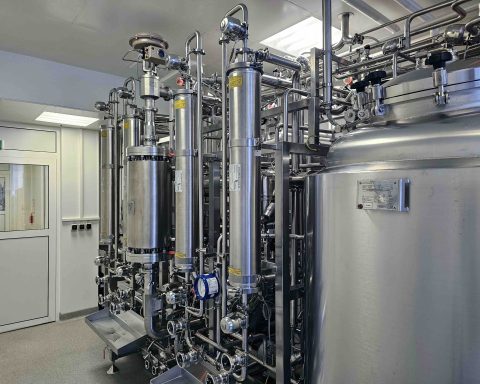Author: Arupendra Das is a Lead Consultant at Integrated Capability Aider (ICA) & Krishnamurthy, CEO, VSM.
Niels Bohr, the celebrated physicist & Nobel laureate said in one of his amusing remarks: “It is very hard to predict, especially future.” In light of this comment, Sales forecasting (SF) – monthly/annual becomes a complex exercise where sales folks starting from a Medical Representative (MR) to a Sales Manager juggles with historical facts and figures to provide a credible future result (revenue).
To make the sales forecasting (SF) process more holistic (and not merely mathematical exercise) we suggest that you may ask the following questions to yourself and sales team:
Q.1 What was the previous years (historical) sales median (not average) across Medical representative and brands? One can further break it down on a regional basis.
Q.2. How much data insight do you have on markets, prescribers, and prospects?
- Growth rate
- Current potential of a prescriber/prospect *
- Adoption pattern for a molecule*
Q.3. Are your Medical Representatives “Farmers” (good at retaining and developing customers) or “Hunters” (great at customer acquisition)?
Q.4. Is your organization ready to invest in activities that lead to customer acquisition and by what percentage (%) of sales?
Despite having data and answers to the above, both sales & marketing still face twin challenges of:
- Inculcating a monthly as well as annual sales/revenue generation strategy into the sales forecast by combining both Doctor and brands
- Aligning sales forecast (pipeline strategy) with sales force execution on a daily and monthly basis
*Segmentation & Targeting can help to generate data on both potential and adoption pattern
Overcoming challenge no.1:
In the current scenario, most companies are moving from a generalized sales force (a product basket offering across GP & Specialists) to a specialty focused structure (related product portfolio or therapeutic class offering to Specialists). The reason for this shift is both intrinsic (within the company) and extrinsic (market).
But the most discernible factor emanating from this scenario is a change in business model leading to ‘Key Account Management”. The MRs of today have either large (India) or small (Bangladesh) territories to handle, but the number of doctors in the visiting list has definitely shrunk with micro-level attention being given to each doctor in terms of FOV ( frequency of visit) and SOV (share of voice across brands).
Such developments offer unique opportunities for sales forecasters, and I will show you how to create a “divide and conquer” framework for success.
If you look at the above figure carefully, you will realize that each quadrant represents a different sales strategy and ensures a steady flow of customers (Prescribers/Prospects) for both new and existing products. This flow needs to be a part of sales force KPI and should be incorporated in the Sales Force Automation system (SFA) or mobile reporting (colloquial).
There is no golden rule on how to adopt this framework, but Prescriber retention (status quo) should contribute to 75-80% of sales. This is because doctor retention is easier and less expensive. To create a new prescriber or account, you might have to invest twice the amount in terms of activities.
This could be followed by Prescriber penetration (5%-10%) as existing prescriber with a little nudge from MRs will find it comfortable to write more of the same product if the prescription potential exists. Then it could either be “New Product penetration” or “Account Acquisition” and so on thereby taking the final tally to 100%.
A caveat: Incorporate only those pipeline strategies that fit in with your current corporate goals and market scenario. Do not try and adopt all.
Overcoming challenge no.2:
Having mastered the pipeline framework and incorporating the same into sales forecasting process, it is time we started looking at ways to align the sales forecast (results) with field force efforts. This is a relatively simpler task, and we must utilize Sales Force automation tools to maximum effect.
A Call planning template is available with most Sales Force Automation platform and comprises of doctors, brands to be promoted, date of visit planned, location, morning or evening, etc. But such templates are archaic and does little to connect planning with execution.
A modified sales forecasting template which captures doctor, specialty, brands, pipeline strategy, date & frequency of visit should replace the call planning template.
SFA reports with support from analytics should now be able to track the amount of field efforts (FOV) an MR provides towards a doctor and SOV towards the desired brands. This linkage of efforts (execution) and pipeline strategy completes the sales forecasting process as a whole.
Conclusion:
The word “Process” is commonly associated with Sales Forecasting but in my view, it is the culmination of account strategy (for a prescription based pharmaceutical company), and no strategy is complete until it is operationalized.
By operationalizing I mean execution tactics and unless it (tactics) is tracked daily, we shall never know why sales forecast succeeded or failed to deliver targeted revenue. The four most important factors leading to near accurate sales forecast are Doctors, Products, FOV, SOV and their interrelationship can only be measured through a complete SFA platform.
An organization that is able to integrate both (SF & SFA) will have a greater competitive advantage and stand a better chance of winning in the market.
Author Biography
Krishnamurthy is the CEO of VSM Software P ltd., a leading provider of software solutions for the Pharma industry in the region. He is keenly interested in CRM and automation software for the industry







